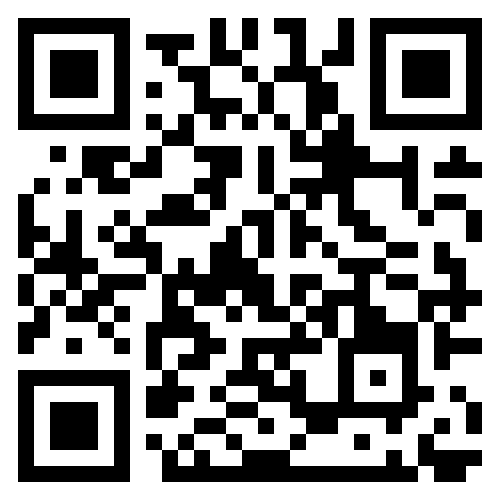Network science for philosophers
Max Noichl
Utrecht University
2025-07-4

To follow along, visit www.maxnoichl.eu/talk
About Me
- Promovendus at Utrecht University
- Interested in computational methods for philosophy.
- Background in HPS, education in comp. methods via GESIS, CompSciHub Vienna, SFI.
- Working on cognitive dynamics of philosophy, scientific model transfer, scientific information flow…
Goals of this talk
- Introduce key concepts of network science
- Show some examples from philosophy
- Share resources
What are networks?
- Networks are graphs: Network Vocabulary
- Networks are a data structure: Networks as data
- Many things can be understood as networks that we don’t immediately think of as such. E. g. bimodal word – document networks, similarity based networks based on embedding models, networks of collocations, etc.
- Networks are Matrices: Adjacency Matrix
Some exciting results!
Some exciting results!
- Scale free networks.
- Strength of weak ties.
Degree distributions
- Let’s generate simple random graph: Erdős–Rényi model
- Let’s look at the degree distribution: ER-degrees
- But it turns out, many real world networks don’t look like this! Example: Citations in philosophy
Scale free networks
- Let’s try Preferential attachement: Barabási-Albert Model
- The distribution now follows a power-law \(m * k^{- \alpha}\): Degree distribution BA-model
- It’s common to look at these distributions on log-log plot: Let’s compare!
- The powerlaw exhibits scale-freeness: However you zoom around the graph, it looks the same.
- Also, power-law distributions are heavy-tailed: Tail-comparison
- They are to robust to random, but fragile to targeted attacks: The average node doesn’t predict behaviour.
- These distributions are very common, and suggest rich-get-richer processes: The Matthew effect
For to everyone who has, more will be given, and he will have abundance; but from him who does not have, even what he has will be taken away.
— Matthew 25:29
Scale free networks
- These distributions are also common in social networks in philosophy: Petrovich, 2021
- And historically: Collins, 1998 (p. 56/80)
- Also useful to philosophy of science: Rubin & Schneider, 2021
Small worlds & weak ties
- We start with a simple random geometric graph.
- A signal takes quite a while to propagate: Signal propagation.
- But if we add just very few long connections: ‘weak’ ties:
- The signal now propagates much faster: Strength of weak ties.
- Weak, very distant ties are crucial for information spread in real communities. Many real world networks exhibit “small world effects”. (Formally: High clustering and small shortest path length.)
- These properties are highly relevant to network epistemology: Zollman, 2009
Exploring networks!
Visualization
- Force directed networks: Explore in gephi-lite
- Some guidelines, by Mathieu Jacomy.
- UMAP/t-SNE: Flattening mammoths
- Edge bundling: Helpful, but handle with caution.
Clustering, Community-detection
- What’s a good clustering?
- One idea: Maximize Modularity (more edges within cluster than expected by a null-model)
- Louvain-algorithm: First Iteration.
- We then merge clusters & repeat: Second iteration.
- Leiden-algorithm (slightly improved version of Louvain)
- Stochastic Blockmodel: Explicit statistical model of communities.
Some general thoughts
- Hairballs are the start of an analysis, not the end.
- Are you interested in network effects? Or do you want to control for them?
- Don’t accidentally rediscover random graph theory!
- (Null models are important!)
ERGMS
- How to incorporate null-models into graph-analysis? – There are so many possible graphs!
- One option: Exponential Random Graph Models fitted using MCMC to the adequate graph-category.
- Are features like density, star-patterns, homophilic connections, etc. more common than expected under chance?
- Used to investigate Philosophy of Science itself: McLevey et al., 2018
- Hard to make work in practice, identifiability problems.
Tools
Software
- Network analysis in Python: networkx
- Advanced network modelling in python: graph-tool
- Network-analysis in R (also includes ERGMs): statnet
- Interactive network-visualisation: Gephi
- Easy exploration of scientometrics: Vos-Viewer
- Prettier network-plots in python: Pylabeladjust
Data sources
Citation data
- Web-of-Science
- CrossRef (Great to fix bad citations.)
- Open-Alex (also great for abstracts, OA-literature)
Text-parsing
- Jstor
- Preprint servers (See ArxivHTML)
- Texts can be network-data! Malaterre & Lareau, 2022
Some of my own work
Modeling Model-transfer
- OpenAlex Mapper: A huggingface space.
- Useful to investigate model-transfer, concept-spread, scientific cultures.
Cognitive Dynamics of philosophy
- Philosophical literature, uniform sample, 1950-2015
- We parse positions & examples: Some initial visualizations.
- Some first results (very wip ): Predicting Citation counts
Thank you!
Literature
Barabasi, Albert-Laszlo, and Reka Albert. 1999. “Emergence of Scaling in Random Networks.” Science (New York, N.Y.) 286 (5439): 509–12. https://doi.org/10.1126/science.286.5439.509.
Collins, Randall. 1998. The Sociology of Philosophies: A Global Theory of Intellectual Change. Cambridge, Mass: Belknap Press of Harvard University Press.
Granovetter, Mark. 1983. “The Strength of Weak Ties: A Network Theory Revisited.” Sociological Theory 1: 201–33. https://doi.org/10.2307/202051.
Malaterre, Christophe, and Francis Lareau. 2022. “The Early Days of Contemporary Philosophy of Science: Novel Insights from Machine Translation and Topic-Modeling of Non-Parallel Multilingual Corpora.” Synthese 200 (3): 242. https://doi.org/10.1007/s11229-022-03722-x.
Petrovich, Eugenio. 2022. “Acknowledgments-Based Networks for Mapping the Social Structure of Research Fields. A Case Study on Recent Analytic Philosophy.” Synthese 200 (3): 204. https://doi.org/10.1007/s11229-022-03515-2.
Rubin, Hannah, and Mike D. Schneider. 2021. “Priority and Privilege in Scientific Discovery.” Studies in History and Philosophy of Science Part A 89 (October): 202–11. https://doi.org/10.1016/j.shpsa.2021.08.005.
Watts, Duncan J., and Steven H. Strogatz. 1998. “Collective Dynamics of ‘Small-World’ Networks.” Nature 393 (6684): 440–42. https://doi.org/10.1038/30918.
Zollman, Kevin J. S. 2009. “The Epistemic Benefit of Transient Diversity.” Erkenntnis 72 (1): 17. https://doi.org/10.1007/s10670-009-9194-6.